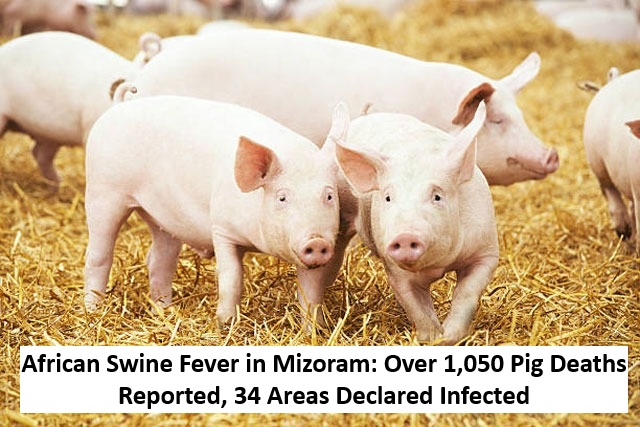
Mizoram is once again grappling with an outbreak of African Swine Fever (ASF), which has resulted in the death of more than 1,050 pigs since March 2024. The state’s Animal Husbandry and Veterinary Department (AHVD) confirmed the resurgence of the disease and has declared 34 areas across Lawngtlai, Mamit, and Siaha districts as ASF-infected zones.
Outbreak Locations Near International Borders
Lawngtlai shares its border with Myanmar and Bangladesh
Mamit borders Tripura and Bangladesh
Siaha is adjacent to Myanmar
These geographic connections increase the risk of cross-border disease transmission.
Confirmed Outbreak and Culling Operations
The new ASF outbreak was confirmed on March 20, 2024, following tests conducted at the NERDDL in Guwahati. Since then, AHVD teams have culled over 400 pigs and piglets to contain the spread in affected districts.
Economic Impact Since 2021
ASF has significantly impacted the pig farming economy in Mizoram over the past few years:
2021: 33,417 pig deaths; 12,568 culled | Loss: ₹334.14 crore
2022: 12,795 pig deaths; 11,686 culled | Loss: ₹210.32 crore
2023: 1,139 pig deaths; 980 culled | Loss: ₹15.77 crore
2024: Reported loss so far is part of a total ₹896.69 crore loss since 2021
Government Response and Compensation
The Mizoram government has compensated hundreds of families for losses due to ASF. Surveillance and containment operations are ongoing in affected districts, and the spread to unaffected areas is being closely monitored.
ASF First Reported in 2024 in Champhai District
The first case of ASF in 2024 was reported on February 9 in Leithum village, located in Champhai district, which borders Myanmar. Since then, the disease has spread to other parts of the state.
Is ASF Dangerous to Humans?
ASF does not infect humans and is not a direct health threat to people. However, it poses severe indirect risks including:
Economic losses for pig farmers
Disruption in pork supply chains
Threats to rural livelihoods
To prevent its spread, human contact with infected pigs or contaminated environments should be minimized.
Read More: One Simple Ten Minute Daily Habit Can Cut Heart Attack Risk by Half

 Share
Share



